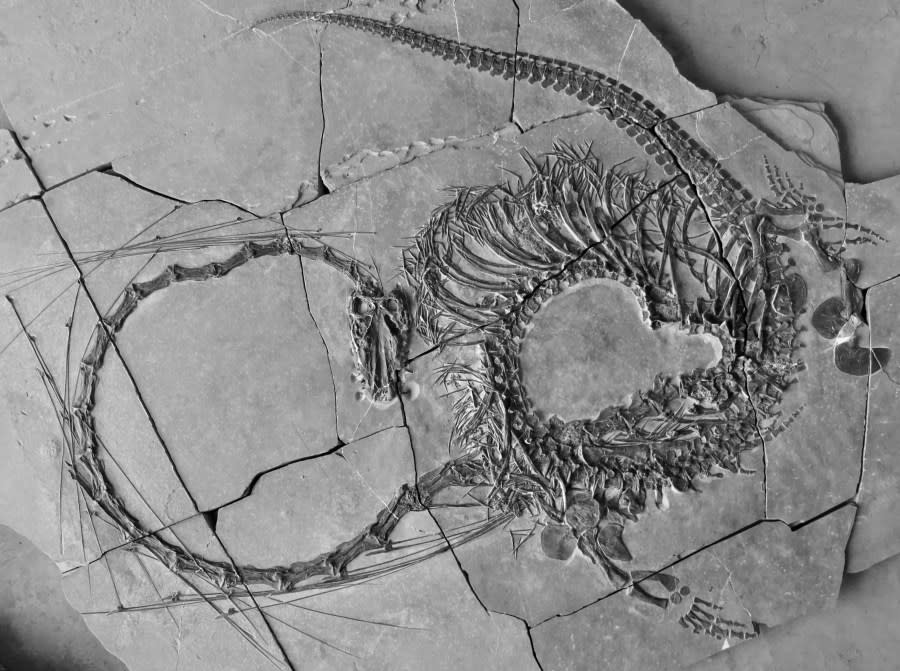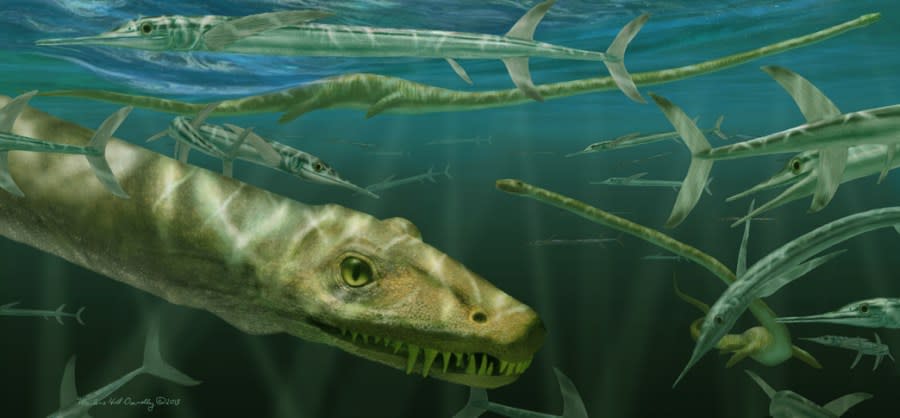240 million-year-old ‘dragon’ fossil revealed by scientists

(KTLA) — An international team of scientists has released images of what they say is a 240 million-year-old aquatic reptile fossil that resembles the long, snake-like features of a mythical “Chinese dragon.”
Dinocephalosaurus orientalis spanned more than 16 feet and roamed the ocean waters in China during the Triassic period, according to a news release from the National Museums of Scotland.
The reptile’s extraordinarily long neck, which contained 32 separate neck vertebrae, has drawn comparisons to other strange marine reptile fossils dating to the same time period in both Europe and China.
“However, Dinocephalosaurus is unique in possessing many more vertebrae both in the neck and in the torso, giving the animal a much more snake-like appearance,” scientists said.
The species was originally identified in 2003, but there have since been additional discoveries in China of more complete specimens, including one which is reportedly “fully articulated” that has enabled scientists to recreate the bizarre long-necked beast in renderings.
“This discovery allows us to see this remarkable long-necked animal in full for the very first time. It is yet one more example of the weird and wonderful world of the Triassic that continues to baffle paleontologists,” Dr. Nick Fraser, Keeper of Natural Sciences at the National Museums of Scotland, said.
Dinocephalosaurus’ fossil, according to the release, shows the animal had flippered limbs and preserved fishes in its stomach region, both of which scientists say is evidence that the massive reptile was extremely well adapted to an oceanic lifestyle.
“This has been an international effort,” Professor Li Chun with the Institute of Vertebrate Paleontology and Paleoanthropology said. “Among all the extraordinary finds we have made in the Triassic of Guizhou Province, Dinocephalosaurus probably stands out as the most remarkable.”
A team of researchers from four different countries, including America, studied the fossil over 10 years at the Institute of Vertebrate Paleontology and Paleoanthropology, Beijing, which is a part of the Chinese Academy of Sciences.
“We hope that our future research will help us understand more about the evolution of this group of animals, and particularly how the elongate neck functioned,” Dr. Stephan Spiekman, a researcher based at the Stuttgart State Museum of Natural History said.
For the latest news, weather, sports, and streaming video, head to PIX11.



